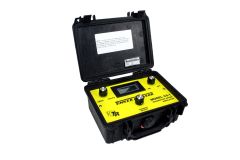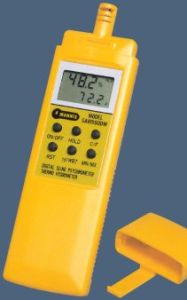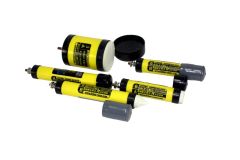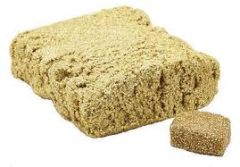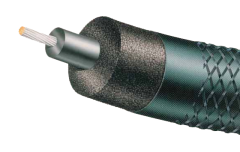Magnesium Anode Rods for Cathodic Protection by Farwest Corrosion
Magnesium rod anodes are used in a variety of ways to prevent corrosion on metallic structures of many kinds. These uses include:
- Water reservoirs and tanks
- Water heaters
- Gas or water service entrance piping
- Steel structures in high resistivity electrolyte
These anodes types are quite versatile and can be configured in many ways, depending on the application, and can offer installation convenience for the user.
Magnesium Anode Rod Alloys
There are two alloys available; the ProMag standard potential alloy and the UltraMag high potential alloy. The voltage potential of the ProMag is approximately -1.4 to 1.5 volts whereas the voltage potential of the UltraMag alloy is approximately -1.6 to -1.7 volts (with respect to a copper-copper sulfate reference).
| Material | Mg % | Al % | Mn % | Zn % | Cu % max |
Ni % max |
Fe % max |
Other imp. % max |
|
|---|---|---|---|---|---|---|---|---|---|
| each | total | ||||||||
| ProMag Alloy | Bal. | 2.5- 3.5 |
0.20 min |
0.7- 1.3 |
0.01 | 0.001 | 0.002 | 0.05 | 0.30 |
| UltraMag Alloy | Bal. | 0.010 max |
0.50- 1.3 |
- | 0.02 | 0.001 | 0.03 | 0.05 | 0.30 |
Anode rods are available in a number of standard diameters (see below) and rods can be produced up to 25 feet in length. A galvanized steel core is embedded lengthwise in the center of the anode rod allowing a reliable electrical connection to the anode rod.
| Identification Number |
Nominal diameter in inches |
Core wire diameter in inches |
Approximate weight per lineal foot |
| FAR-500 | .500 | 0.135 | 0.180 |
| FAR-840 | 0.840 | 0.135 | 0.456 |
| FAR-1050 | 1.050 | 0.135 | 0.684 |
| FAR-1315 | 1.315 | 0.135 | 1.068 |
| FAR-1561 | 1.561 | 0.188 | 1.500 |
| FAR-2024 | 2.024 | 0.188 | 2.500 |
| FAR-2562 | 2.562 | 0.188 | 4.000 |
| FAR-325 | 3.250 | 0.188 | 5.50 |

A positive electrical connection must be established and maintained between the anode core and the structure to be protected. To facilitate this, anode rods can be custom manufactured and supplied in a number of configurations depending on the application. These include:
- Rods cut to a specified length with one or both ends saw-cut (plain)
- Rods cut to a specified length with the core wire exposed to a specified length on one or both ends
- Rods provided with a hex-head threaded steel mounting cap on one end (see below)
- Rods provided with a cable lead for attachment to structure
- Rods cut to short sections and linked together with a flexible connector

Anode Caps: As described above, magnesium anode rods can be supplied with a hex-head threaded steel mounting cap in the following size configurations:
| Anode Diameter | Anode Length | Threaded Plug Size |
| 0.840" | As Required | 3/4" NPT |
| 1.050" | As Required | 1" NPT |
| 1.315" | As Required | 1-1/4" NPT |
| 2.024" | As Required | 2" NPT |

Drive-in Anodes: Magnesium anode rods can be manufactured for soil applications where the anode is driven into the soil. Commonly called "Drive-In Anodes", there are variations to these anodes as follows:
Driving Cap
- The anode is provided with a press-fit steel driving cap and the cable is attached to a steel cap by a resistance weld or other method.
- An HDPE driving cap is pressed onto the anode after the cable is soldered to the magnesium anode core
Anode End
The opposite end of the anode that is driven into the ground, can be provided in one of two ways:
- The anode end is machined or cut to a 45 degree angle.
- The anode is is machined to a point or "pencil-tip". Due to extra machining, this method is typically more expensive than a 45 decree cut.
A stainless steel clamp is provided on the anode lead wire so the anode can be electrically connected to a structure, such as a pipe service riser.



